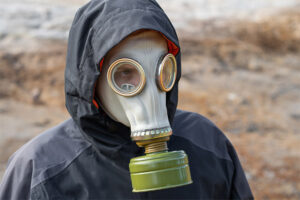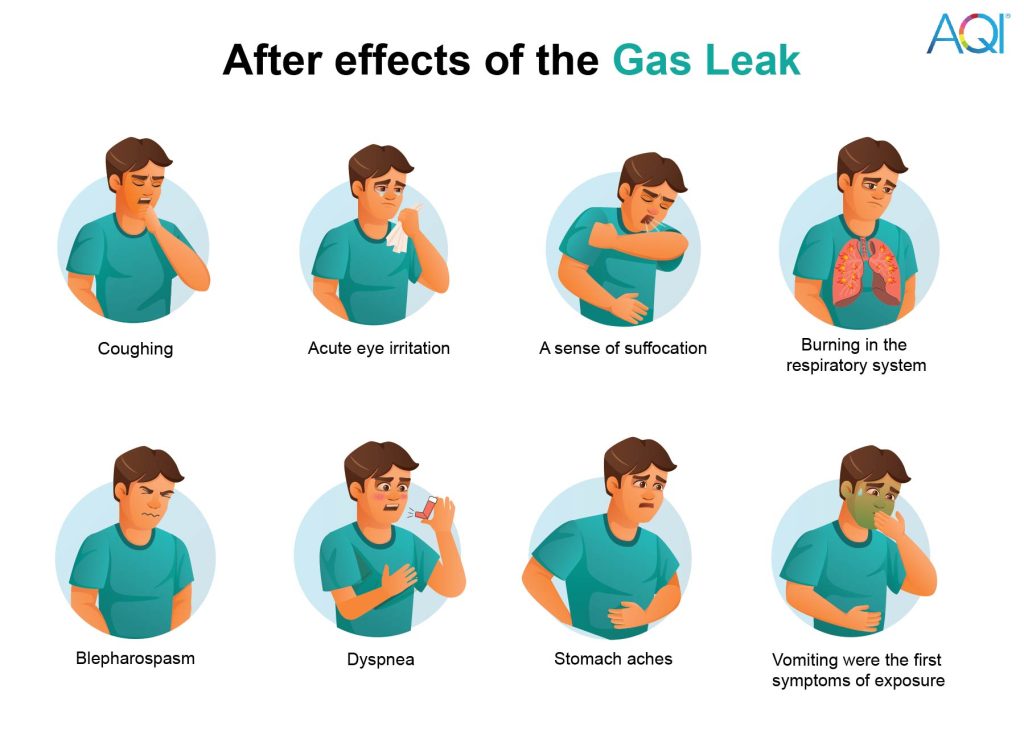The Bhopal Gas Tragedy was the country’s first big industrial catastrophe. More than 15,000 people were found dead and 600,000 people were harmed by at least 30 tonnes of methyl isocyanate gas. The Bhopal gas tragedy is regarded as the greatest industrial disaster in history.
What was the Bhopal Gas Tragedy?
The Bhopal Gas Tragedy occurred after a gas leak at the Union Carbide pesticide facility on the night of December 2-3, 1984. Methylisocyanate gas was released, killing many individuals and exposing a lot more.
What caused the Bhopal Gas Tragedy?
Water was suspected to have entered a side pipe and into Tank E610 during the late evening hours of December 2, 1984. Tank E610 housed the 42 tonnes of MIC that had been there since late October. When the water got added to the tank, it triggered a runaway exothermic reaction. The reaction was amplified by pollutants, high ambient temperatures, and a variety of other conditions, including the presence of iron from corroding pipelines.
Although the pressure in tank E610 was minimal at 2 psi(Pound-force per square inch) at 10:30 p.m., it had risen to 10 psi by 11 p.m. The reading was said to be faulty by two senior staff. Workers in the MIC area began to feel the effects of MIC gas exposure by 11:30 p.m. and began looking for a leak. By 11:45 p.m., one had been discovered and reported to the MIC supervisor on duty at the time.
What is Methyl Isocyanate?
Pesticides are made from methyl isocyanate, a colorless liquid. When properly maintained, MIC is completely safe. When the compounds in MIC are exposed to water, they react with one another, creating a heat reaction. Although it is no longer manufactured, methyl isocyanate is still utilized in insecticides.
How did the Bhopal Gas Tragedy Happen?
In 45 to 60 minutes, about 30 tonnes of MIC were released into the atmosphere from the tank. Within two hours, this amount rose to 40 tonnes. All the fumes were blowing towards Bhopal. The majority of city inhabitants became aware of the leak either by being exposed to the gas or by opening their doors to investigate the disturbance. Coughing, acute eye irritation, a sense of suffocation, burning in the respiratory system, stomach aches, and vomiting were the first symptoms of exposure. People who were awoken by these symptoms ran away from the plant. This worsened the situation. The more the people ran, the more they inhaled the toxic air.

How did the Government React?
The Indian government had never faced a calamity like this before. Following the disaster, legal actions between India, UCC, and the United States commenced. In March 1985, the government approved the Bhopal Gas Leak Act, allowing it to act as the legal advocate for victims. The UCC offered India a $5 million assistance fund, but the government rejected it and requested $3.3 billion instead. Union Carbide eventually agreed to pay $470 million in an out-of-court settlement in February 1989.
The Supreme Court of India also stated that the deceased’s relatives should get between Rs. 100,000 and Rs. 300,000. Furthermore, individuals who were wholly or partially incapacitated were to get Rs. 50,000-500,000. While those who had a brief injury were to receive Rs. 25,000-100,000. The Supreme Court ordered UCIL to fund a hospital in Bhopal to treat the tragedy’s victims. Seven former UCIL workers, all of whom were Indian citizens, were convicted of causing death by carelessness in June 2010 and sentenced to two years in jail. They were eventually released on bail.
After Effects of the Gas Leak
- Coughing
- Acute eye irritation
- A sense of suffocation
- Burning in the respiratory system
- Blepharospasm
- Dyspnea
- Stomach aches
- Vomiting was the first symptom of exposure

Because methyl isocyanate gas is nearly twice as dense as air and hence has a propensity to fall toward the ground in an open setting, children and other inhabitants of shorter stature breathed larger quantities due to their height.
The following are some of the long-term health impacts that have been studied and reported:
- Eyes: Chronic conjunctivitis, early cataracts
- Respiratory tracts: Obstructive illness, pulmonary fibrosis, TB, and chronic bronchitis
- Neurological system: Memory loss, motor skills impairment, numbness, etc.
- Children’s health: Failure to develop, intellectual disability
What did UCC do about the Tragedy?
UCC began attempting to distance itself from the gas leak almost immediately after the accident. Its main strategy was to blame UCIL, claiming that the facility was controlled entirely by it.
The poisonous cloud had hardly dispersed when an American attorney filed the first multibillion-dollar lawsuit in a US court on December 7. UCC recognized moral responsibility and agreed to pay $470 million to the Indian government. This amount was disbursed among the victims in a complete and final settlement mediated by the Indian Supreme Court. UCC’s stock increased by $2 per share, or 7% when the settlement was announced.
UCC has tried to alter, conceal, and hide scientific facts at every point. The corporation has yet to reveal exactly what was in the poisonous fog that engulfed the city on that December night.
Conclusion
The events in Bhopal showed us that rapid industrialization in underdeveloped nations without keeping safety laws in mind may have disastrous repercussions. The incident illustrated how localized issues like industrial dangers and chemical pollution are frequently linked to global market forces.